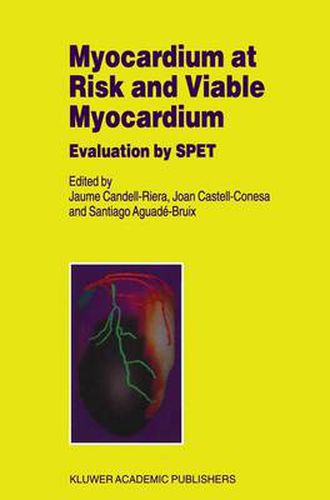Readings Newsletter
Become a Readings Member to make your shopping experience even easier.
Sign in or sign up for free!
You’re not far away from qualifying for FREE standard shipping within Australia
You’ve qualified for FREE standard shipping within Australia
The cart is loading…






This title is printed to order. This book may have been self-published. If so, we cannot guarantee the quality of the content. In the main most books will have gone through the editing process however some may not. We therefore suggest that you be aware of this before ordering this book. If in doubt check either the author or publisher’s details as we are unable to accept any returns unless they are faulty. Please contact us if you have any questions.
The clinical use of nuclear cardiology for the assessment of myocardial ischemia continues to grow at an unprecedented rate. Part of the reason for this growth is the technical advances in single photon emission computerized tomography (SPECT). SPECT has been shown to provide high contrast images superior to planar imaging techniques. An important and recent technical advancement in SPECT has been ECG-gated myocardial perfusion SPECT to generate simultaneous myocardial perfusion and function information from a single study. Automated, quantitative techniques have facilitated the widespread application of this breakthrough. Another recent advancement has been the use of attenuation correction techniques to help remove the effects of the physical phenomena that degrades the visual and quantitative accuracy of SPECT images. Another reason for the growth of the clinical use of nuclear cardiology is the large body of published evidence documenting the effectiveness of SPECT techniques for assessing myocardial ischemia, myocardium at risk, viable myocardium and stunned or hibernating myocardium. These assessments have been shown to be important not only in diagnosis but also in prognosis. This book is divided into three major sections, each addressing the important topics of nuclear cardiology. The first section is a that have led to the clinical success description of the technical aspects of state-of-the-art myocardial perfusion SPECT imaging. This section deals with the radionuclides, instrumentation, image acquisition and analysis, interpretation and quantification techniques used in the most progressive nuclear cardiology clinics.
$9.00 standard shipping within Australia
FREE standard shipping within Australia for orders over $100.00
Express & International shipping calculated at checkout
This title is printed to order. This book may have been self-published. If so, we cannot guarantee the quality of the content. In the main most books will have gone through the editing process however some may not. We therefore suggest that you be aware of this before ordering this book. If in doubt check either the author or publisher’s details as we are unable to accept any returns unless they are faulty. Please contact us if you have any questions.
The clinical use of nuclear cardiology for the assessment of myocardial ischemia continues to grow at an unprecedented rate. Part of the reason for this growth is the technical advances in single photon emission computerized tomography (SPECT). SPECT has been shown to provide high contrast images superior to planar imaging techniques. An important and recent technical advancement in SPECT has been ECG-gated myocardial perfusion SPECT to generate simultaneous myocardial perfusion and function information from a single study. Automated, quantitative techniques have facilitated the widespread application of this breakthrough. Another recent advancement has been the use of attenuation correction techniques to help remove the effects of the physical phenomena that degrades the visual and quantitative accuracy of SPECT images. Another reason for the growth of the clinical use of nuclear cardiology is the large body of published evidence documenting the effectiveness of SPECT techniques for assessing myocardial ischemia, myocardium at risk, viable myocardium and stunned or hibernating myocardium. These assessments have been shown to be important not only in diagnosis but also in prognosis. This book is divided into three major sections, each addressing the important topics of nuclear cardiology. The first section is a that have led to the clinical success description of the technical aspects of state-of-the-art myocardial perfusion SPECT imaging. This section deals with the radionuclides, instrumentation, image acquisition and analysis, interpretation and quantification techniques used in the most progressive nuclear cardiology clinics.